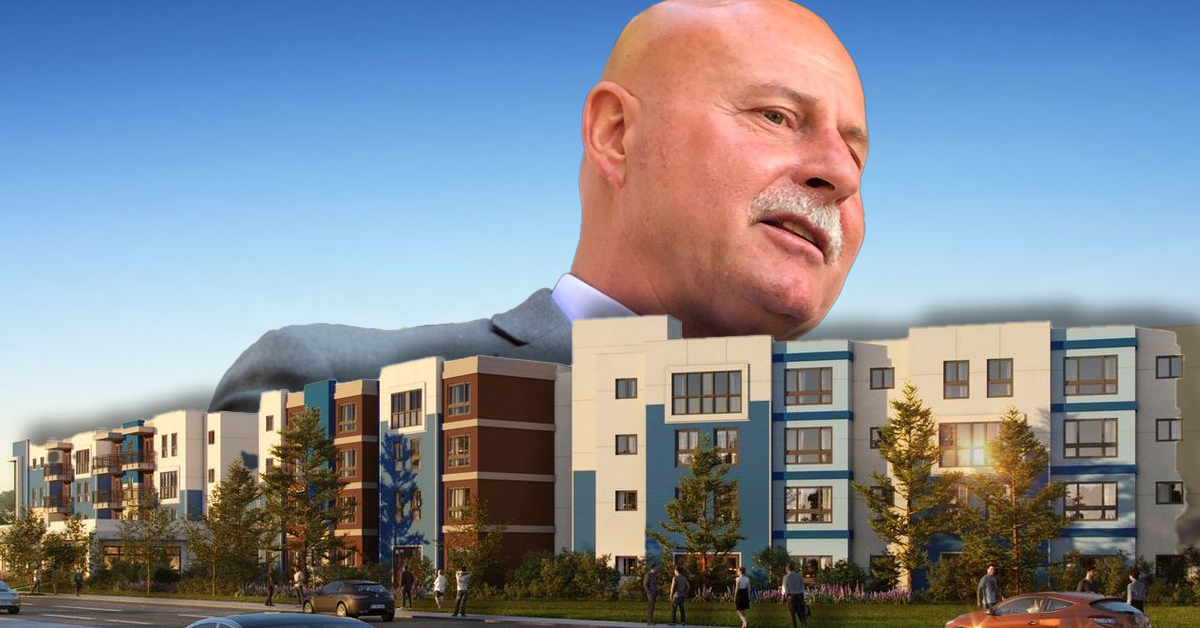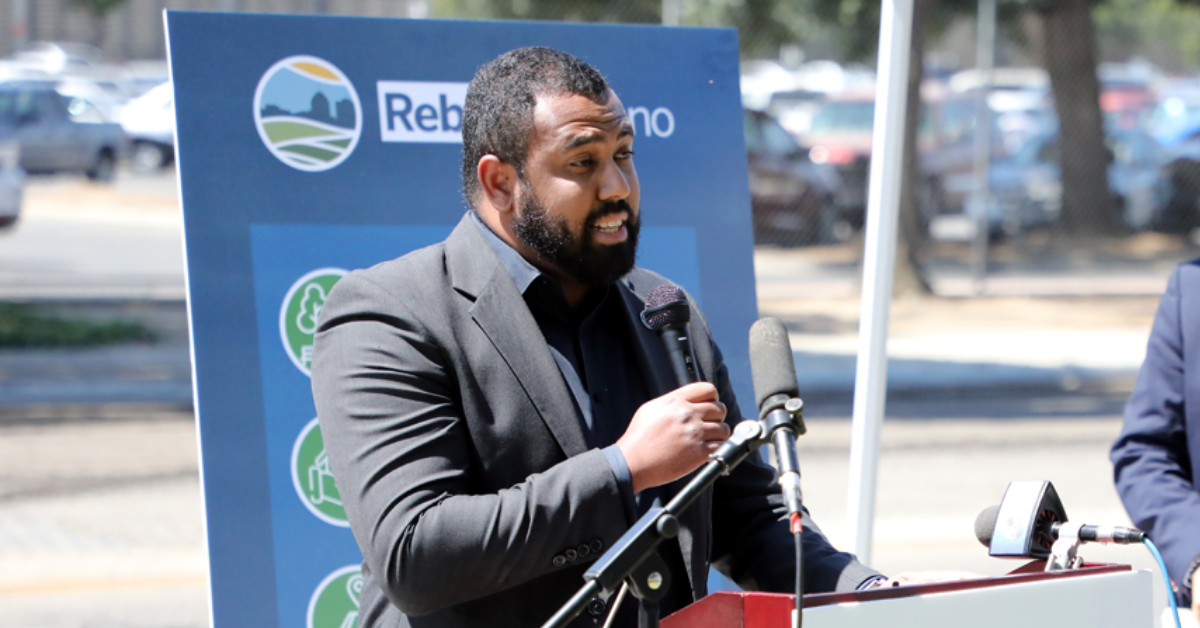There’s a new cop on Fresno’s blight beat – the Historic Preservation Commission.
The commissioners could be a stern and reliable force for order. I hope so.
The commission on Monday unanimously agreed it’s time do everything possible to save two of the three surviving trolley cars from Fresno’s once-thriving street car system.
We’re talking about the abandoned trolley car diner at 1731 S. Cherry Avenue, south of Downtown.
The commissioners want a letter sent to the property owner. They want the site’s potential buyer to act before it’s too late. Perhaps most of all, they want to light a fire under City Hall’s newly expanded army of code enforcement.
“I don’t want you to think that you asking me to write them (the owner) a letter is going to change the world,” said Karana Hattersley-Drayton, the city’s historic preservation manager and commission secretary. “But we’ve got to do something.”
Hattersley-Drayton said one of the trolley cars is the “Dragon” type from around 1912 and the other is a Birney from the 1920s. She said they were moved to their current location in 1935 and combined to form a diner.
The diner had several names over the years. I could have sworn Hattersley-Drayton said the diner at one time was a “beatnik hangout.” I couldn’t tell if that was the diner’s name or its reputation.
“You know, poetry readings,” she said.
Either way, the diner clearly has a colorful past.
The diner’s site on Cherry is in the middle of the South Van Ness Industrial Area. I love this part of Fresno. I often walk from City Hall, explore the area’s nooks and crannies, head south on Van Ness to Railroad Avenue, then circle back to City Hall on G Street and Tulare or Fresno street.
I always see something interesting. Hattersley-Drayton said she knows of four property owners in the South Van Ness Industrial Area who are busy fixing up their sites. After all, there’s lots of revitalization going on throughout the Downtown area. Revitalization is in the air.
The problem with the trolley car diner is that it’s empty and taking a beating. The structure is falling apart. The exterior is full of graffiti. There are tall weeds. It’s surrounded by a security fence, thanks to City Hall.
The place already has official status as a local historic resource. The challenge is getting it restored before nature and vandals finish their destruction.
Hattersley-Drayton said the plan is to send a letter from the commission to the owner. The letter would outline the owner’s legal responsibility to maintain the property and structure. If the owner fails to respond, the city’s Code Enforcement Division would get involved in a big way.
The lot isn’t big, perhaps 1,200 square feet. The owner is facing about $6,000 in abatement costs incurred by the city and unpaid property taxes.
The owner lives in Texas. Hattersley-Drayton said there are many complications in the owner-City Hall relationship. She didn’t go into detail. She did say a Bay Area businessman very much wants to buy the property and restore it to its former splendor.
Commissioners were 100% behind Hattersley-Drayton.
If the trolley cars disappeared, Chairman Patrick Boyd said, “we as a community would suffer a loss.”
It wasn’t clear to me why the next step in this process is a letter from the Fresno Historic Preservation Commission. City Hall has in its hands the new Blighted Vacant Building Ordinance. The City Council recently passed an emergency ordinance greatly expanding the potential penalties facing uncooperative slumlords. Mayor Ashley Swearengin has beefed up Code Enforcement’s human assets. There are now two independent administrative hearing officers to hear landlord appeals and expedite the reform of Fresno’s privately-owned built environment.
I’ve seen code enforcement citations where owners of vacant buildings are fined $30,000 or more. These fines can now be doubled if immediate corrective action isn’t taken. The landlords can even be taken to Superior Court.
Why are these historic trolley cars sitting on a spur of City Hall bureaucracy?
Hattersley-Drayton said the Code Enforcement Division is busy.
Can the commissioners make a real difference in the trolley cars’ fate and the fate of other historic areas suffering from blight? Two things from Monday’s meeting make me think they can.
First, this is a group with backbone. This was made clear in the meeting’s opening minutes.
One of the first chores in any public meeting is approving the agenda. It’s usually a routine matter. Not on Monday.
Commissioner Don Simmons noticed that the agenda posted at City Hall for public consumption didn’t include Old Armenian Town. Old Armenian Town, of course, is the on-again, off-again mixed use project south of the Convention Center. The Great Recession and the demise of the Redevelopment Agency have been major setbacks to the project. Second thoughts by the developers probably are a factor, as well.
I haven’t attended recent commission meetings, so the context of Simmons’ frustration wasn’t clear to me. But the commissioners apparently have been reviewing a proposal to designate the Old Armenian Town area as a historic district.
Staff about two weeks ago had placed a legal notice in The Bee identifying Monday’s meeting as a key public hearing in this process. But the Old Armenian Town issue was missing from the agenda available in the City Clerk’s Office.
It was this agenda that determined what the commission was authorized to act on.
Simmons asked Hattersley-Drayton and Dan Zack, the city’s assistant planning director and a preservationist of the highest order, about the change.
Zack said the City Manager’s Office asked that the item be removed. Folks needed more time to chew on things. Zack didn’t name names. He didn’t say what needed more review.
That didn’t sit well with Simmons, a long-time preservationist and no rookie when it comes to internal bureaucratic conflict.
Pulling the Old Armenian Town item without adequate explanation to the commission “seems like a really bad precedent,” Simmons said. The essential question, he added, is: “Does the commission have authority to make decisions or not?”
(The buck on historic preservation issues stops with the City Council.)
I got the sense that Simmons felt the City Manager’s Office was treating the commission in a patronizing manner, and doing so publicly. That’s the way I viewed things.
Simmons said he would vote against approving the agenda. If he got three commissioners to agree, the meeting would be over almost before it started. In the end, the commissioners voted 5-1 to approve the agenda and Zack promised to get a better explanation from City Manager Bruce Rudd.
But the other commissioners, even though they voted to approve the agenda, were moved by Simmons’ stand. I won’t say it was a radicalizing moment for the commission. Let’s say it was a blunt reminder of the commissioners’ duty.
Second, Zack late in the meeting told the commission about his recent trip to Detroit.
You know – the city in Michigan that had nearly 1.9 million people in 1950 and now has a population estimated at 677,000. Detroit is shorthand in the minds of many (if not most) Americans for municipal failure and urban dystopia.
Zack went to Michigan to attend a conference for urban planners like himself. His presentation to the Fresno Historic Preservation Commission was low-key. It was like we were sitting in his living room, watching slides from Zack’s vacation.
Zack was spellbinding. Nor did he pull any punches.
Detroit, Zack said, “has been burned down. It’s been knocked down. It’s been abandoned.”
One of his slides showed an aerial view of downtown Detroit and surrounding neighborhoods. Many of the residential blocks were green – devoid of manmade structures. The lots had returned to a state of nature.
At the same time, Zack said, there’s plenty of evidence that Detroit is renewing itself. The “repair,” he said, “is gradual and incremental.” It’s also real.
“I was amazed at how many pioneers are going back in,” he said.
Zack had slides of neighborhoods with houses whose exteriors had been turned by their owners into works of art. That’s not my cup of tea, but Zack’s point was to highlight a dynamic and risk-taking community spirit.
There were slides of restored houses with distinctive Midwestern architecture from the first half of the 20th century (and perhaps the 19th). Some of these houses were next to rundown houses from the same period. Which side would win – renewal or decay? That unstated question added drama to Zack’s show.
Most of Zack’s slides were of downtown Detroit. It’s enough here to note that downtown Detroit (at least from the eyes of camera-toting Dan Zack) is beautiful. He said there’s construction everywhere. He said billions have been invested. He said billions more will be spent.
“I was surprised at how walkable the urban core is,” Zack said. That got my attention.
Zack touched on downtown Detroit’s street pattern. I learned a new term – “terminated vista” I gather that means a busy downtown Detroit street doesn’t go straight on forever. The street soon angles in a different direction. The result is a busy street with something visually interesting at the bend, like a striking modern building or a restored older building or a pocket park.
I got a new appreciation for the terminated vistas in our Cultural Arts District.
Zack said there’s always the chicken-or-egg question in urban renaissance. Do you get investment first (construction or restoration on spec, if you will), with jobs, stores, homes and people to follow? Or do you somehow get the people to come, and then public/private investment hustles in?
“Making that investment first has made a difference in Detroit,” Zack said.
This was no “look what I did over the holidays” ego trip by Zack. This was serious policy debate. One of the most interesting slides was a side-by-side comparison of downtown Fresno and downtown Detroit. They’re pretty much equal in size.
Zack ended with the main point.
“If they can do it,” Zack said, “we can do it.”
Let’s save those trolley cars.












Re:the #99 Trolly car on cherry st just wondering if you were able to find out if it has been taking care of? It use to be called the trolly car cafe… I grew up in the house directly behide it… the home has been torn down but half my family worked there as cooks & waitress from 1977 till it closed. Our land lord name was Mr. Funk… just wanted to know if you got any more info on it….